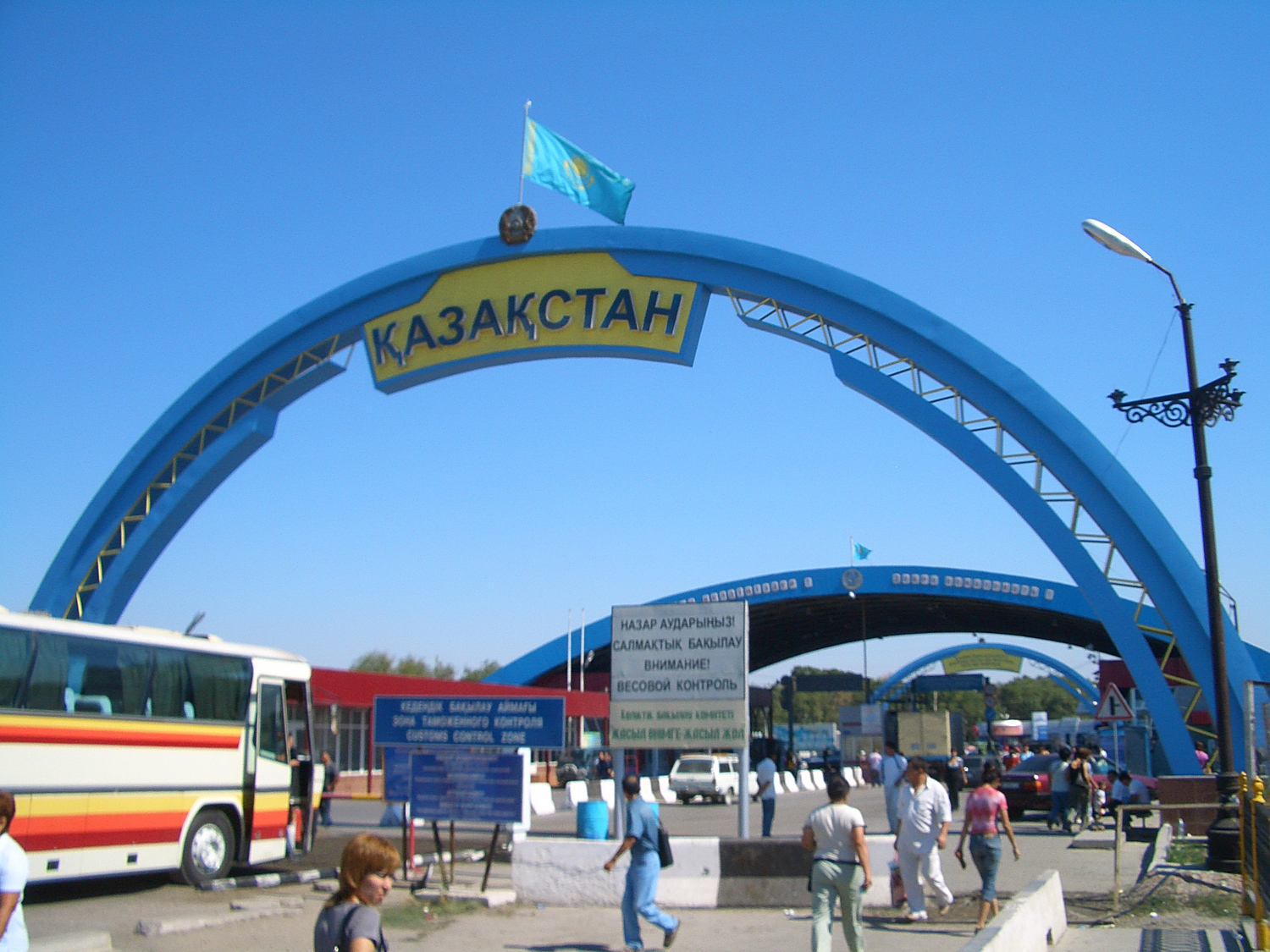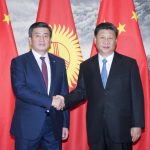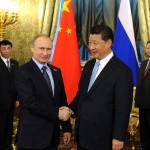by Alexander Morrison
Few parts of the world are the subject of as much sustained journalistic ignorance as Central Asia. News from what are patronizingly known as the “stans” rarely makes it into mainstream news outlets, except in connection to Islamic terrorism, authoritarianism, and ethnic and religious tensions.
While all three are certainly problems in Central Asia, these “discourses of danger” crowd out any nuance or perspective from much reporting and supposedly “strategic” analysis. If there is one thing we should have learned in the last few years, it is that Molenbeek is a more likely source of Islamic terrorists than Uzbekistan, and yet Islam Karimov’s death in September immediately had commentators reaching for unsubstantiated clichés about a growing Islamic threat.
Authoritarianism is certainly a curse in Central Asia, but there are important distinctions between Turkmenistan’s closed neo-Stalinist system, Tajikistan’s kleptocracy, Kyrgyzstan’s fragile parliamentary liberalism and Kazakhstan’s dictatorship of technocrats. As for ethnic and religious tension, the real wonder is that it is relatively contained, given the diversity of the region: nothing comparable to the ethnic cleansing in Darfur, the Christian-Muslim violence in Nigeria, Turkey’s war against the Kurds, Pakistan’s Sh’ia/Sunni conflict and persecution of Christians, or the Balkan wars of the 1990s, has ever happened in Central Asia.
Yet on one of the rare occasions when political violence became ethnicized in Central Asia – in particular the Osh events in Kyrgyzstan in 2010 – we were treated to a full range of lazy assumptions about “ancient, ineradicable ethnic hatreds,” reminiscent of Robert Kaplan’s “Balkan Ghosts” explanation for the violent collapse of Yugoslavia.
One particularly persistent trope is that the region is a dangerous powder keg because of the legacy of Soviet borders. As the BBC’s Edward Stourton wrote in the Guardian at the time of the Osh violence: “The question of what really lies behind Kyrgyzstan’s problems is in truth easy to answer; the way Stalin designed the region ensured that it would regularly be shaken by inter-ethnic violence. When he drew lines on a map to form new Soviet republics in the 1920s, he created minorities that were bound to make them unstable.”
Peter Zeihan for Stratfor similarly wrote of Osh that “Stalin drew his lines well,” while the Economist’s analysis of the violence was simply entitled: “Stalin’s Harvest.” The image of Stalin sitting in the Kremlin with a giant pencil, malevolently drawing lines on the map of Central Asia to ensure that the region would remain unstable if it ever found itself outside the Soviet Union, seems to be ineradicable. Despite strong criticism at the time, most notably from Sean Guillory and Madeleine Reeves, this lazy, essentialist and above all ahistorical explanation for Central Asia’s woes has proved remarkably persistent.
Philip Shishkin’s book on Ferghana – Restless Valley – blames most of the region’s problems on Stalin’s supposed “divide and rule” policies. A recent security analysis also refers to “Stalin’s Machiavellian ethno-political management” in drawing borders in the Ferghana Valley “irrespective of ethnic grouping.” Stratfor’s recent historical profile of Uzbekistan alleges that “Stalin made sure that the borders were drawn to mix populations further and maintain ethnic tension,” while Shaun Walker’s otherwise thoughtful December 2016 profile of the Central Asian republics 25 years after independence asserts that “the wavy, overlapping borders of Kyrgyzstan, Uzbekistan and Tajikistan are hangovers from the Soviet borders, and often appear as if drawn at random by a drunkard holding a pencil.” At least here Stalin is apparently not to blame.
Why is this a problem? Firstly, it suggests that Central Asians are prisoners of their past, with no agency of their own that might allow them to escape it. Secondly, it grossly misrepresents that past. Central Asia’s borders might be complex, and they might be problematic, but they were not drawn at random, or without reference to ethnicity. And, above all, they were not imposed unilaterally from Moscow.
One of the major developments in the historiography of the USSR since Soviet archives opened after 1991 has been a series of in-depth studies of Soviet nationalities policy in non-Russian regions, and particularly in Central Asia. The work of Yuri Slezkine, Ronald Suny, Terry Martin, Arne Haugen, Francine Hirsch, Sergei Abashin and many others has revealed that, far from being a “Breaker of Nations,” as Robert Conquest had it, Stalin was responsible for giving them territorial and institutional form when he was Commissar for Nationalities in the 1920s. This was not a cynical divide-and-rule policy, but a response to the strength of nationalist movements that had emerged in many parts of the Russian Empire during the period of the revolution and civil war. It led to a sincere, if perhaps misguided, attempt to create nation-states where none had existed before, and this in turn was because both Lenin and Stalin believed that “backward peoples” could never attain socialism unless it came within a nationalist framework.
This was not a top-down process driven by the Central Party organization in Moscow. In the 1920s, the Soviet regime in Central Asia was fragile, and badly in need of local allies. As Adrienne Edgar has shown for Turkmenistan, Paul Bergne for Tajikistan, Ali Igmen for Kyrgyzstan, Adeeb Khalid for Uzbekistan and Dina Amanzholova and Tomohiko Uyama for Kazakhstan, the new national units grew out of an often uneasy political alliance between local nationalist intellectuals and the Soviet state – most importantly the so-called Jadids in Uzbekistan and the Alash Orda in Kazakhstan.
Local communist organizations, which had significant numbers of local cadres, played a key role in negotiating the new national boundaries with Moscow and with each other. Unlike in Africa – where at the 1884 Berlin Congress, European colonial powers really did just draw lines on the map, or in the Middle East, where the Sykes-Picot agreement paid little or no attention to local political desires – the borders that emerged in Central Asia were not drawn at random, even if at times they often seem to defy geographical logic. They were a product of late-Tsarist and early-Soviet census data, ethnographic and orientalist scholarship, and also in part of the process of raionirovanie – identifying supposedly rational and viable economic units, and ensuring that each new state met minimum criteria for becoming a full-blown Soviet Socialist Republic: these included a population of at least a million, and a capital city connected by rail.
Inevitably, the process of drawing national boundaries in a region where these borders had never existed before, where bilingualism and multi-layered identities were common, and where divisions of language and ethnicity often fell along the rural/urban divide, created many anomalies. Among the sedentary population, a wide range of older identities – Sart, Khwarazmi, Ferghani, Samarqandi, Bukharan – were subsumed under the label of “Uzbek,” which, before 1921, had only referred to particular tribal groups. Tashkent and Shymkent were both cities with a mixed population of Europeans and Uzbeks, surrounded by a hinterland populated largely by Kazakhs. The former ended up in Uzbekistan, the latter in Kazakhstan. Tajik-speaking Bukhara and Samarkand were surrounded by Turkic-speaking countryside and ended up in Uzbekistan, a decision which rankles with Tajikistan to this day.
As Kazakhs and Kyrgyz were predominantly nomadic peoples, they made up a tiny fraction of the urban population in their republics, where the cities were largely populated by Europeans and Uzbeks. Osh and Jalalabad, the two cities that saw the worst violence in 2010, were included in Kyrgyzstan despite having a predominantly Uzbek population, but this was because otherwise they would have lost their economic hinterland, which was mainly populated by Kyrgyz, and also because without them, southern Kyrgyzstan would have had no cities of any size.
The process of border revision continued long after Stalin’s death, with some changes made as late as the 1980s. As Madeleine Reeves has shown, these often followed a very different territorial and ethno-political logic from the razmezhevanie of the 1920s, and were a product of horse-trading over access to water and agricultural land at a very local level. The complex web of borders and enclaves around the Ferghana Valley was not part of a Machiavellian Stalinist plot to sow ethnic strife, but an attempt to accommodate the extraordinarily complex reality of a mixed, diverse population, and to satisfy local nationalist demands.
With hindsight, we can say that the attempt to introduce the national principle into a region where populations and political boundaries had always been organised differently was bound to cause problems: this is as true in Central Asia as it is everywhere else in the world. However, it was not Stalin, nor the Soviet state, that forced Central Asia to become nationalist. As Adeeb Khalid has argued, the Soviet nation-building project in Central Asia had local roots, and developed out of ideas and movements among the Muslim intelligentsia of the region that pre-dated the coming of Soviet power. The commissars simply co-opted them in the 1920s.
While most of this first generation of Central Asian intellectuals would be purged in the 1930s, the nation-building projects continued. These were always in tension with the broader aim of creating a common Soviet identity, but the national idea proved remarkably resilient. The independent nation-states that reluctantly emerged from the Soviet collapse in 1991 did not have to start from scratch to create national identities – they were able to build on existing Soviet foundations. That most Central Asians today identify strongly with the state they live in is a clear indication of how thoroughly the idea of nationhood has been absorbed, assimilated and indigenized.
Twenty-five years ago, rather than seeking to understand the immediate political and economic circumstances that caused inter-ethnic relations to break down, causing the former Yugoslavia to erupt in violence, Robert Kaplan attributed it to the ‘ancient, ineradicable’ hatreds between Serb and Croat, or Christian and Muslim, that had been kept in check only by the ruthless authoritarianism of Tito. His argument was memorably eviscerated by Noel Malcolm, and few today would take these ideas seriously, if applied to Yugoslavia or anywhere else in Europe. Yet Central Asia is still presented as a prisoner of its Soviet past, a place where inter-ethnic tension still lurks just under the surface, rendered inevitable by Stalin’s wicked line-drawing.
Nation-states are never natural political units. They have to be constructed, and reality has to be adjusted, to produce that perfect, illusory alignment between borders and identity that is the goal of every nationalist. This has led to ethnic cleansing, population transfers and forced assimilation – not just in most former European colonies, but all over Europe itself, the supposed home of the national idea. Compared to the population exchanges between Greece and Turkey in the 1920s, the expulsion of Germans from much of Eastern Europe after 1945, the departure of the European settlers from Algeria after 1962, or the ethnic cleansing and genocide that accompanied the Balkan wars of the 1990s, the consequences of nationalism in Central Asia so far have been relatively mild. This was partly because when the new Soviet states were first created, it was within the supranational framework of the USSR, and they did not have ‘hard’ borders with each other. Nor was it ever intended or anticipated that they might.
Even since independence and the hardening of these borders, population transfers have been gradual and voluntary: millions of Russians have left the region (though millions more remain), Kazakhs have gradually moved to Kazakhstan from neighbouring republics, attracted by its relatively buoyant economy, but all the Central Asian republics continue to have significant ethnic and religious minorities. Aggressive ethnic nationalism may threaten this equilibrium, but it is less marked than in Russia, and indeed than in many countries in Western Europe.
The tangled borders of the region do present significant challenges, particularly in the Ferghana Valley, though, as Madeleine Reeves has shown, the populations who live with these borders from day to day have developed ingenious strategies for coping with, and even exploiting them. The lack of regional integration in Central Asia is a real problem that needs to be addressed. However, the suggestion that the way the borders were drawn makes this inevitable – that Stalin’s malevolent ghost continues to haunt Central Asia, and that its peoples are trapped by his legacy – needs to be dismissed once and for all.






Thank you, Alexander Morrison, I found this article fascinating. My casual, uninformed interest in central Asia took on a more serious dimension when China’s early “new silk road” ideas began drifting in a westerly direction over the Internet, and I couldn’t help but wonder how that development project would affect that bunch of Central Asian nation-states that surfaced in Western consciousness when the USSR finally slipped under the waves.
The more I learn about OBOR, the more intense my curiosity becomes. The links to scholars who specialize in the so-called “Stans” seem like good places to begin developing a background in preparation for understanding the future impact of China’s super-mega-project on each of the five states. As with every tectonic shift in geopolitics and geoeconomics, the impact is bound to be both enormously exhilarating and excruciatingly painful.